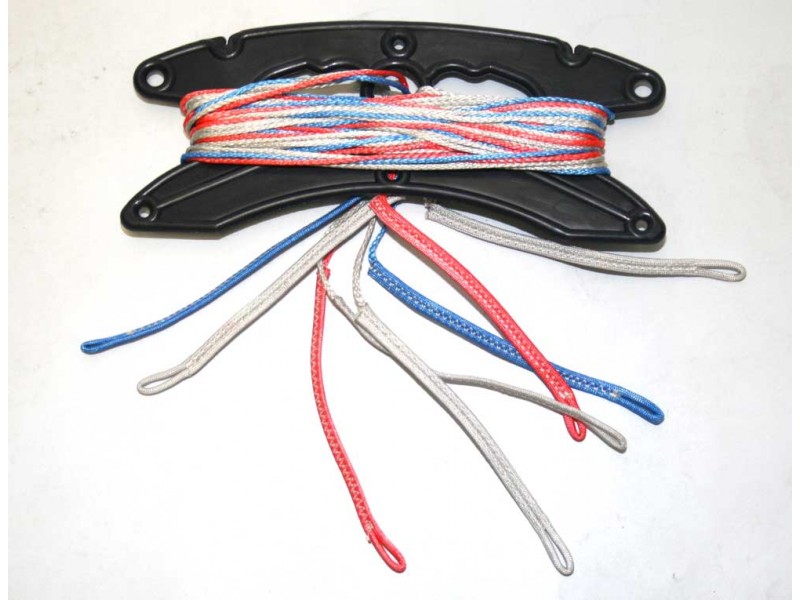
[icegram campaigns=”7743″]
Why does my kite have line extensions?
Something many people new to the sport wonder when they unpack they’re first kite is why do the lines split apart at one point in to 2 lines, 1 much longer (generally between 18-20m) and the other generally between 3 and 5m.
If you have no idea what I’m talking about have a look at your lines next time you roll them out. If it’s a fairly new bar then most likely about 3 metres from the end (it could be at either end) you’ll see that the lines are spliced and then joined together with 2 interlocking loops. (If you’re lines don’t have this don’t sweat it, not all lines do).
These line extensions are designed to give you more flexibility when flying your kite. Without getting too technical, as the kite moves faster it gains more power. The kite will move faster if it is given more space to move in (as it has more time to build up speed). Thus by making the lines shorter we reduce the amount of space the kite has to move in, so reducing it’s top speed and reducing the amount of potential power available.
Why would you want to do this?
Well for a start it means that you can use your kite in a wider range of conditions, so a kite on 20m lines will be more manageable in higher winds than the same kite on 23m lines, more value for money…bonus.
The other side effect of shorter lines is the kite responds much quicker, so it will turn faster and react quicker. This is due to the reduced lag (the longer the lines the more they tends to bag out behind the kite thus reducing transmission time) and the more severe angle from the lines up to the wing tips.
Why does this matter?
Well lets say you’re looking to go wave riding. Having a kite that responds much more quickly to your input is very useful when you’re cranking out those top turns. The reduced length also makes re launch that much easier for the reasons explained above, which can be crucial when your in the impact zone with some mean looking waves.
